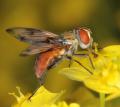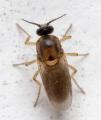Diptera.info :: Family forums :: Syrphidae
Page 1 of 2: 12
|
|
Flying can be fun for two
|
|
| Cor Zonneveld |
Posted on 29-10-2007 21:33
|
|
Member Location: Amstelveen, the Netherlands Posts: 840 Joined: 14.10.06 |
Simosyrphus grandicornis, if my information is correct. Never seen this type of tandemflight before!
Cor Zonneveld attached the following image: 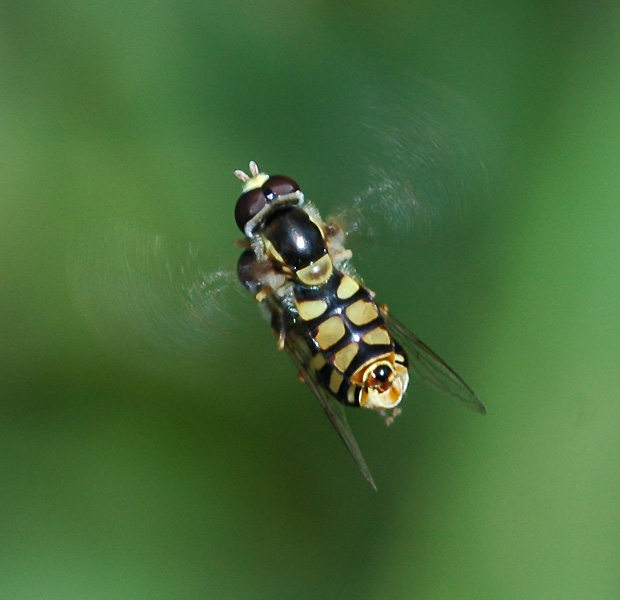 [112.95Kb] Thanks for your attention Cor Zonneveld |
| Cor Zonneveld |
Posted on 29-10-2007 21:34
|
|
Member Location: Amstelveen, the Netherlands Posts: 840 Joined: 14.10.06 |
alternative angle
Cor Zonneveld attached the following image: 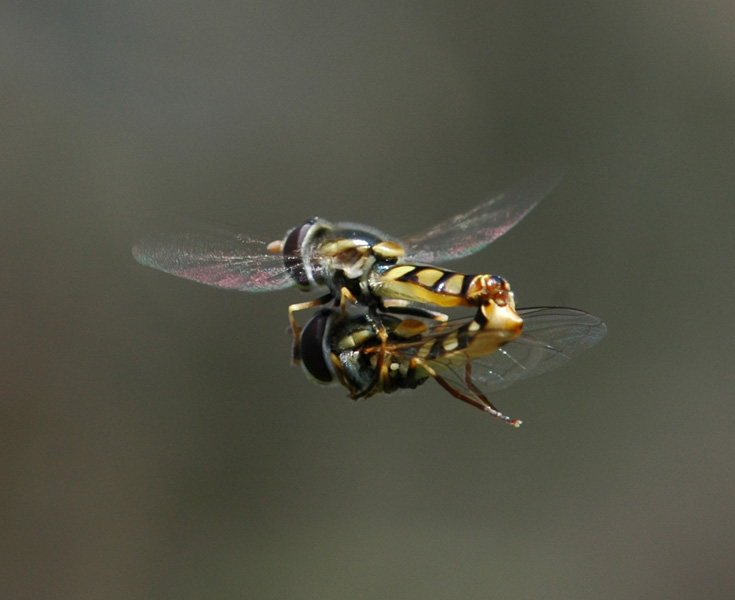 [111.22Kb] Thanks for your attention Cor Zonneveld |
| Cor Zonneveld |
Posted on 29-10-2007 21:36
|
|
Member Location: Amstelveen, the Netherlands Posts: 840 Joined: 14.10.06 |
cannot get enough of it!
Cor Zonneveld attached the following image: 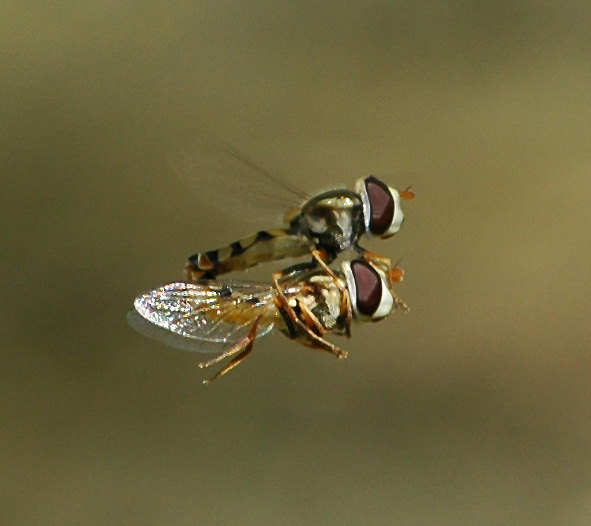 [102.61Kb] Thanks for your attention Cor Zonneveld |
| javig |
Posted on 29-10-2007 21:47
|
|
Member Location: Spain Posts: 222 Joined: 21.04.07 |
These photos are impressive!  |
| Kahis |
Posted on 29-10-2007 22:28
|
|
Member Location: Helsinki, Finland Posts: 1999 Joined: 02.09.04 |
aaaaand where were the photos taken?  Not in Amstelvee I guess Not in Amstelvee I guess 
Kahis |
| Gerard Pennards |
Posted on 29-10-2007 22:33
|
|
Member Location: Amersfoort Posts: 1914 Joined: 07.06.04 |
Another Australian species....nice!!  Greetings Greetings, Gerard Pennards |
|
|
|
| cosmln |
Posted on 29-10-2007 22:46
|
|
Member Location: Romania Posts: 956 Joined: 18.03.07 |
just WOW photo. thanks for sharing. cosmln |
| conopid |
Posted on 29-10-2007 22:52
|
|
Member Location: United Kingdom Posts: 1039 Joined: 02.07.04 |
Fantastic captures - well done.
Nigel Jones, Shrewsbury, United Kingdom |
|
|
|
| Susan R Walter |
Posted on 30-10-2007 00:11
|
|
Member Location: Touraine du Sud, central France Posts: 1802 Joined: 14.01.06 |
How does one tell the difference between Simosyrphus grandicornis and Melangyna viridiceps? See my post http://www.dipter...ad_id=9139
Edited by Susan R Walter on 30-10-2007 00:12 Susan |
| Cor Zonneveld |
Posted on 30-10-2007 09:11
|
|
Member Location: Amstelveen, the Netherlands Posts: 840 Joined: 14.10.06 |
Thanks for all enthousiastic replies! @Kahis: Amstelveen? ...close, but no sigar! Melbourne, actually.  Unless I mixed up various species, this is the only really common hoverfly I've seen. @Susan: I've not the faintest idae, honestly. I contacted someone in Australia, who was quite confident about this fly. I can ask her though. Will take some time! Thanks for your attention Cor Zonneveld |
| Andre |
Posted on 30-10-2007 11:22
|
|
Member Location: Tilburg, the Netherlands Posts: 2111 Joined: 18.07.04 |
Impressive series! All frozen without 'freezing' them?  |
| Susan R Walter |
Posted on 30-10-2007 13:25
|
|
Member Location: Touraine du Sud, central France Posts: 1802 Joined: 14.01.06 |
Cor I'd appreciate it if you could find out something. The names do not appear to be synonyms, but I can't distinguish any real differences between the two in images on the internet. I strongly suspect that one or both of them gets misidentified very frequently. Susan |
| Cor Zonneveld |
Posted on 30-10-2007 15:53
|
|
Member Location: Amstelveen, the Netherlands Posts: 840 Joined: 14.10.06 |
@Susan: I've forwarded your question to Susan Wright, who came up with the original ID. @Andre: Well, digitally freezing only... The strong sun shine gave me quite the opposite feeling 
Thanks for your attention Cor Zonneveld |
| Maddin |
Posted on 30-10-2007 18:29
|
|
Member Location: Sacramento CA USA Posts: 194 Joined: 30.06.05 |
Susan R Walter wrote: Cor I'd appreciate it if you could find out something. The names do not appear to be synonyms, but I can't distinguish any real differences between the two in images on the internet. I strongly suspect that one or both of them gets misidentified very frequently. I looked into that: In Vockeroth's Syrphini revision, both genera are in there and it seems, reading the description that the Melangyna (Austrosyrphus) viridiceps has a black thorax, and a yellow face with a black middle stripe, while Simosyrphus grandiconis (the only species of this genus) has yellow notopleural stripes and a completely yellow face. So most of these pics might be Simosyrphus - this said without having seen any types.... The Australian fauna is very interesting, but not very rich, and it would be so great to revise the few Syrphids from there... Who wants to do it? Martin Hauser |
| Cor Zonneveld |
Posted on 30-10-2007 19:16
|
|
Member Location: Amstelveen, the Netherlands Posts: 840 Joined: 14.10.06 |
Here's a portrait, confirming the white face. I agree with the statement The Australian fauna is very interesting, but not very rich, edit: well actually, given my extremely limited experience, all I can reasonably say is: I would use similar words to describe my short stay. Three days of searching with only three species of hoverfly is not what you might call a rich harvest. I experienced the same for bees & wasps, and butterflies. Dragonflies was somewhat better, though still the number of species was quite small. Plants and ants, as well as birds is much better. I have given this some thoughts. The habitats I've seen (tiny tiny fraction only!) seem nutrient poor. May be this causes the very low number of insects I saw?! For those interested in more on Melbourne's wildlife, see my webpage, www.corzonneveld.nl-> favorite photo's -> Victoria 2007. I'm still working on it, but it gives already some impressions. Cor Zonneveld attached the following image: 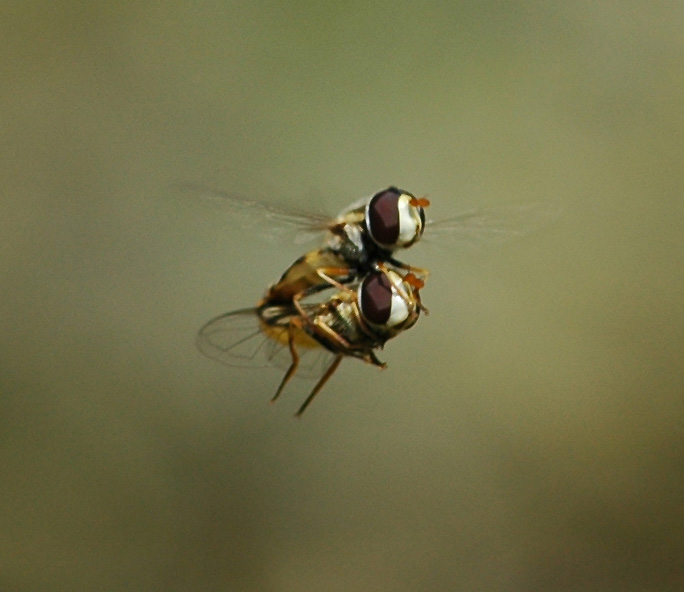 [111.26Kb] Edited by Cor Zonneveld on 30-10-2007 22:38 Thanks for your attention Cor Zonneveld |
| Susan R Walter |
Posted on 30-10-2007 21:02
|
|
Member Location: Touraine du Sud, central France Posts: 1802 Joined: 14.01.06 |
The Australian fauna is very interesting, but not very rich, made me laugh. I come from an area in Australia where it is possible to see perhaps 100 species of butterfly, and moved to an area in the UK where I would be lucky to see 30, and perhaps 60 in the Loire Valley where we have our maison secondaire.I think you need to get your eye in for entomology in Australia. Many places are dry and hot and the insects hide. Martin - many thanks for looking up the descriptions for these syrphids - I will pass this on to my family. Susan |
| Cor Zonneveld |
Posted on 30-10-2007 21:24
|
|
Member Location: Amstelveen, the Netherlands Posts: 840 Joined: 14.10.06 |
made me laugh Sorry, no offence intended! I think you need to get your eye in for entomology in Australia Yes, sure. Regrettably I had too little time to adjust to a different regime. It was a nice experience though. My short visit learned me one more thing: I thought Holland was windy, but Melbourne might easily beat it! (again, far too short observation time...) Edited by Cor Zonneveld on 30-10-2007 21:24 Thanks for your attention Cor Zonneveld |
| jorgemotalmeida |
Posted on 31-10-2007 11:27
|
|
Member Location: Viseu - PORTUGAL Posts: 9296 Joined: 05.06.06 |
Great series of photos!!! Congratulations! One of the best series! Vladimir Davydov, Nikita Vikhrev, Dima (Black), Javig, Rafael Estevez, Dima DD, morfa (John from Sweden), Tony T (for micro-macro!!), Frank Koehler are great photographers! The nectar of photography!  (I will edit this post whenever I remember all others.) (I will edit this post whenever I remember all others.)Anymore suggestions? |
| Susan R Walter |
Posted on 31-10-2007 14:03
|
|
Member Location: Touraine du Sud, central France Posts: 1802 Joined: 14.01.06 |
Cor I am not in the least offended - I was amused. I knew where Martin was coming from - Australia is missing all sorts of big families of creatures, but the ones it does have can occur in large numbers and be extremely interesting - often endemic to relatively small areas. There is a lot of speciation in Australia because populations get separated by unsuitable terrain. Your own experience is not uncommon either. I used to be astonished that friends of mine could visit from the UK and never see a kangaroo of any sort in the wild, but it happens so often that I have come to realise that I was totally habituated and so tuned in to spotting the wildlife in a way that visitors don't get a chance to be. Melbourne certainly can be windy, btw, and it is a hot north wind, just right for whipping up the bushfires and sending a pall of dust over the city. 
Susan |
| Maddin |
Posted on 31-10-2007 16:35
|
|
Member Location: Sacramento CA USA Posts: 194 Joined: 30.06.05 |
Susan, my point was that Australia has a species poor fauna of Syrphids, with about 400 described species it has the same diversity as Europe, but it is much bigger. (The same is true for Africa by the way). But certain groups are much more diverse, for exapmle the Stratiomyidae with also 400 species, are rather rich and the Therevidae have 350 species, but at least 200 undescribed species. Therefore half of the worlds species diversity of Therevidae is in Australia.... So it is hard to make general comments cause the Australien fauna is sometimes extremely rich and in some groups extremely poor, but always very interesting. And it can be hard to collect there, I went to the East Coast rain forest during a draught and I did not find anything, worst collecting in my life, while firends had the best collecting of their lifetime in Australia... still a fascinating continent indeed..
Martin Hauser |
Page 1 of 2: 12
| Jump to Forum: |





